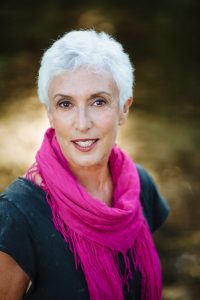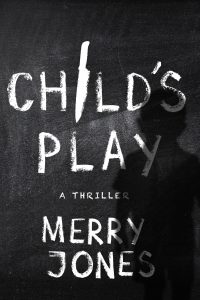Dodging Bullets
 When we wake up each morning, we never know what to expect. A bus might run us down. A drive-by shooter might gun us down. A mugger might knock us down. A terrorist or lone madman might blow us up. A heart attack might finish us off. And so on.
When we wake up each morning, we never know what to expect. A bus might run us down. A drive-by shooter might gun us down. A mugger might knock us down. A terrorist or lone madman might blow us up. A heart attack might finish us off. And so on.
None of us knows what will come at us, or when or where. We do know, though, that sooner or later something will come at us that threatens or ends our lives. The questions are not if but when that lethal something will appear, what form it will take, and whether we will survive it.
This information is not news. We all know that we arrived on earth with a limited visa, and that sooner or later it will expire.
And the inevitability of that expiration is one reason I write suspense novels. I write them because they play out the most primal of human truths: our struggle to dodge that something and survive.
My books aren’t detective novels. They don’t focus on professional spies or police or private investigators. Instead, the protagonists are everyday people who are living their lives, going about their business. A divorced single mother, a second grade teacher, a grad student. They wake up one morning as usual, expecting a routine day, and then: boom. They encounter the unexpected. The unthinkable. The dreaded stuff of nightmares.
In each novel, the encounter takes a different form. The teacher might discover a body in the school. The grad student might see a young man jump out of a window. The single mother might find her young child playing with a body part on the sidewalk. The jarring events vary, but the outcomes are similar: these “ordinary” lives have bumped into an unanticipated mortal wake-up call and, from that moment on, are forever changed.
I didn’t always write books about mortality. For years, I wrote non-fiction (eg. BIRTHMOTHERS) and humor (eg. I LOVE HIM, BUT…) But then, one Tuesday when our kids were little, my husband called to say his routine doctor’s visit had led to the diagnosis of an aggressive often fatal cancer. That day, boom: we came face to face with an unanticipated faceless life-threatening villain.
That’s when I switched genres from light humor to dark mystery. I personified the faceless villain, made it human, knowing that as a human—even a despicable and powerful one, the villain would be vulnerable and flawed, subject to rules of mortality.
That first dark mystery, THE NANNY MURDERS, was about a serial killer, a human version of cancer. He killed wantonly and brutally, maiming his victims much as cancer did.
But unlike in life, within the confines of the novel, I was in charge. I took control. I determined the outcome. Through my protagonist, I confronted, overcame and defeated the murderer. In doing so, I created for myself–and for readers–a sense of victory over not just the killer, but also in a way, over death. That illusion of control was soothing.
Fortunately, my husband recovered. But I had changed. I now saw threats that I hadn’t noticed before. They were everywhere. What if the cancer recurs? What if the school bus goes off the road? What if…
Some would say I’m overstating the idea that mysteries are about fending off mortality. That the plots are not about mortality but about the eternal struggle between good and evil.
 I don’t think so. Because even when what they do is heinous, my villains are not evil personified. They are human, made of the same stuff as the protagonist. Some, like the cult leader in OUTSIDE EDEN, absolutely believe they are the good guys. Others, like the doctor in ELECTIVE PROCEDURES, follow compulsions they can’t control. And a few, like the researchers in SUMMER SESSION or the sheriff in IN THE WOODS, have delusions about their own importance and thus put their own goals and well-being above that of others.
I don’t think so. Because even when what they do is heinous, my villains are not evil personified. They are human, made of the same stuff as the protagonist. Some, like the cult leader in OUTSIDE EDEN, absolutely believe they are the good guys. Others, like the doctor in ELECTIVE PROCEDURES, follow compulsions they can’t control. And a few, like the researchers in SUMMER SESSION or the sheriff in IN THE WOODS, have delusions about their own importance and thus put their own goals and well-being above that of others.
My bad guys believe their actions are justified. Some even see themselves as victims. Like the protagonist, they fight to survive and succeed. Their crimes include human trafficking, dog-fighting, relic smuggling, eco-terrorism, mass or serial killing, and twisting medical research, but no matter what they’ve done, they are each human beings. And because they are human, their drives are familiar: greed, jealousy, a lust for power, a thirst for revenge, a hunger for violence. Most of us have stifled these dark appetites. But when we read about a character who hasn’t stifled them, we can at some level relate.
For me, the suspense novel isn’t a cozy to be served up with a cup of tea. It’s gritty. It’s scary. I don’t write super violent or graphic scenes, but I try to expose the underside of human nature and reinforce the triumph of winning a contest in which the loser pays the ultimate price.
Bottom line, suspense novels give readers—and writers–a safe place to approach the unsettling, dangerous, unanticipated, inevitable and disturbing. We know, going in, that normal order will be disrupted by something dark and life-threatening. But we also expect that, in the end, order and normalcy will be restored. Unlike in life, where we never know and can’t control the outcome, these novels allow us to walk on the edge with fear, darkness, destruction and death and to overcome them. At least for a while.
—
Category: Contemporary Women Writers, How To and Tips
























